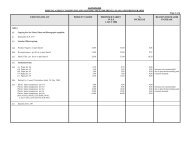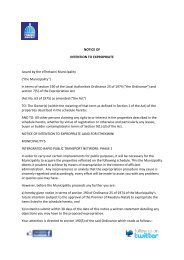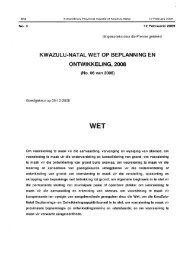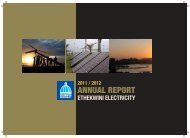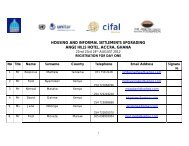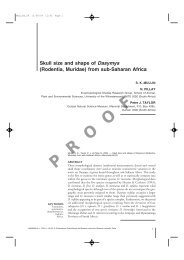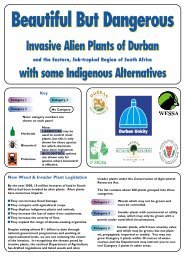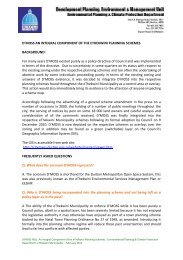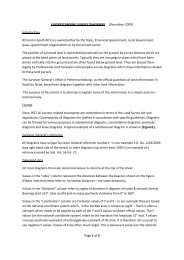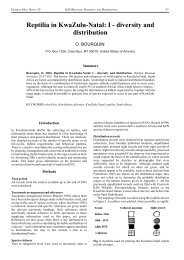Integrated Transport Plan.pdf - Durban
Integrated Transport Plan.pdf - Durban
Integrated Transport Plan.pdf - Durban
Create successful ePaper yourself
Turn your PDF publications into a flip-book with our unique Google optimized e-Paper software.
Currently some 120 000 greenfield sites (6000 ha of vacant land) are<br />
needed over the next 12 to 15 years. Although vacant land is in the north of<br />
the City most low income employment opportunities are to the south.<br />
Clearly these anomalies need to be addressed in a way which will support<br />
economic development and affordable transport for the poorer<br />
communities.<br />
Cost of land is a major issue and in this regard some creative approaches<br />
are needed which take into consideration not only the cost of providing land<br />
but the on-going costs of servicing the community in a municipal context.<br />
<strong>Plan</strong>s to pilot these types of projects in appropriate areas of the City need<br />
to focus on selected sites that support the High Priority Public <strong>Transport</strong><br />
Network. These can be evaluated in terms of cost/benefit analyses which<br />
consider the travelling needs of the community and the appropriate<br />
adjusted subsidisation of land, and if necessary, housing.<br />
The Environment Sector has highlighted a number of generic issues that<br />
relate directly or indirectly to transport. These are:-<br />
� development densification and rural development/<br />
accessibility issues impacting on urban sprawl<br />
� protection of open space<br />
� development density thresholds and protection of<br />
catchment areas<br />
� use of appropriate modes and increasing use of public<br />
transport across all income sectors<br />
� energy efficiency<br />
� pollution reduction<br />
� safe transport of hazardous materials<br />
Clearly the process of integrating land use and transport planning<br />
recognises and needs to respond to these issues. Some of these are<br />
already being addressed in this current ITP.<br />
The National Port Authority recognises a number of issues related to<br />
<strong>Durban</strong> Harbour activities and the various types of access needed to/from<br />
the Port.<br />
Currently the hinterland of Gauteng and over-border destinations account<br />
for 60-70% of freight movement to/from the port with very little of this<br />
movement by rail.<br />
Environment<br />
issues<br />
eThekwini <strong>Integrated</strong> <strong>Transport</strong> <strong>Plan</strong><br />
3.11<br />
Spatial Framework<br />
Summary Report Long Term Trends and<br />
Key City Projects<br />
Port/harbour<br />
issues


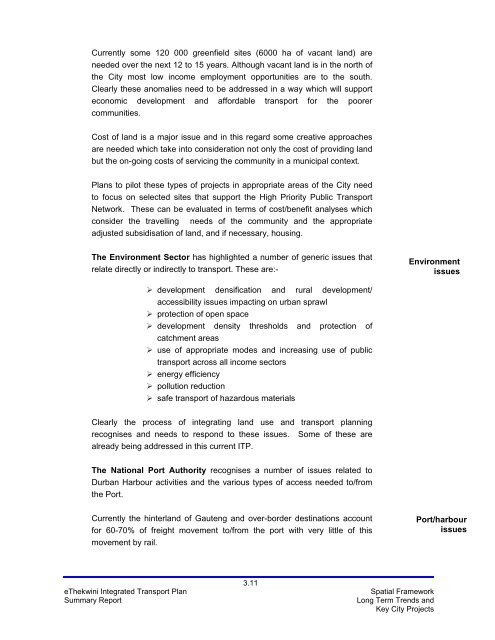
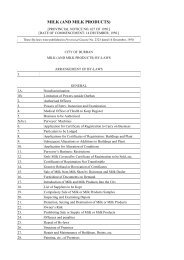
![INK Environmental Sustainability Booklet [19 MB] - Durban](https://img.yumpu.com/22025104/1/190x136/ink-environmental-sustainability-booklet-19-mb-durban.jpg?quality=85)

